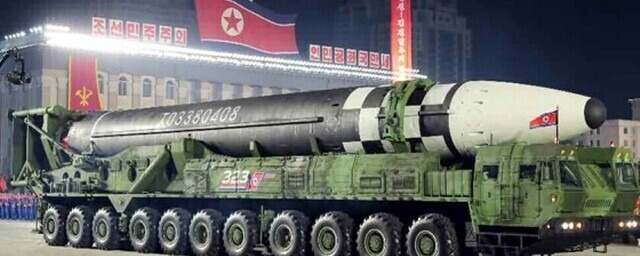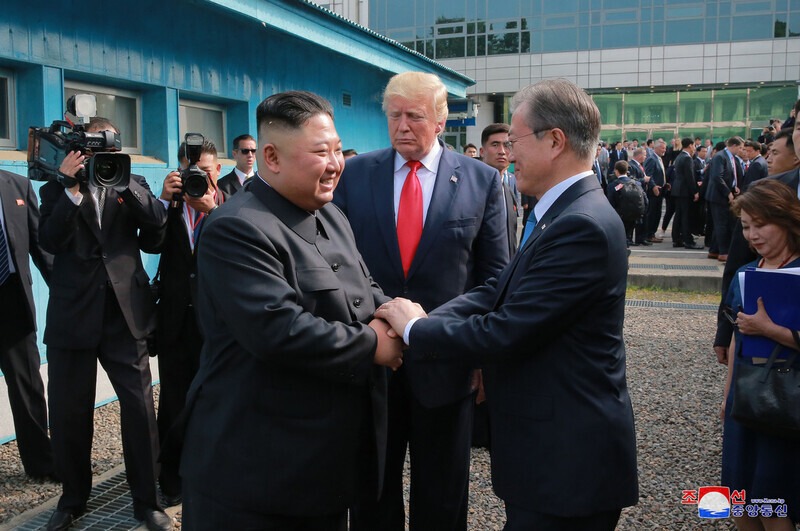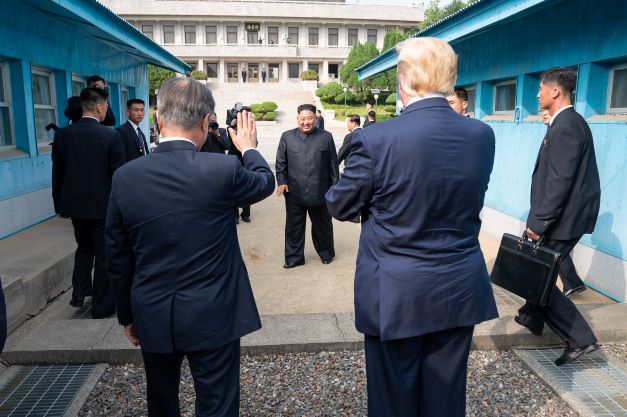North Korea Has Changed – Our Policy Toward It Should Change Too
HANKYOREH
APLN member Cheong Wook-Sik pointed out three critical changes in North Korea and underscored the need to fundamentally reconsider the current approaches to policy on the North. Read the original article here.
Many are calling for South Korea to completely overhaul its North Korea policy on the grounds that the North’s nuclear capabilities have reached the point of no return.
The primary goal of Seoul’s North Korea policy has been the denuclearization of the Korean Peninsula. But since that’s effectively no longer an option, those pundits say, South Korea needs to revise its North Korea policy.
There’s some merit to that argument.
At the same time, we need to pay attention to other critical changes in North Korea that may be less noticeable than its nuclear arsenal.
There are three such changes. First, North Korea appears to have basically abandoned efforts to improve relations with South Korea, the US and Japan. Second, North Korea’s economic difficulties are likely not as severe as people in other countries think. Third, the North Korean leadership has changed its mind about economic sanctions.
Since the early 1990s, Korean Peninsula issues had centered on a certain interplay between North Korea’s nuclear issue on the one hand and South Korea, the US, and Japan on the other. Pyongyang’s nuclear development was a factor motivating hard-line policies in Seoul, Washington and Tokyo, while also presenting those governments with the diplomatic challenge of having to pursue dialogue and negotiation.
North Korea, for its part, had set the aim of thawing its relationships with those three sides — the US in particular — through a mixture of brinksmanship at certain times and dialogue and negotiation at others.
But since late 2019, North Korea has been firmly closing the door to dialogue. A crucial factor in this is its conclusion that it could no longer expect anything to emerge from its summits with South Korea and the US, which had yielded only hollow results when they took place between 2018 and the first half of 2019.
Another factor that should be considered is the possibility that the North’s economic difficulties may not be that serious.
The notion of North Korea being “hard up” has been presented in various forms, including engagement policies calling for the use of assistance, economic cooperation, and relief from economic sanctions to motivate Pyongyang to change, as well as hardline policies calling for the continuation and intensification of sanctions to pressure the North to change or hasten its collapse.
But what if the North isn’t as poor as the outside world thinks?
In July 2021, Pyongyang submitted a voluntary national review to the UN, in which it reported an annual average economic growth rate of 5.1 percent over the five-year period from 2015 to 2019. That number was fully 9.5 percent higher than the Bank of Korea’s estimate over the same period.
Another important factor is the shift in North Korea’s attitude when it comes to economic sanctions: rather than attempting to pursue a situation without sanctions, it has switched focus to living with them.
In the past, North Korea made a fuss about the sanctions spearheaded by the US and called for them to be lifted. But after its experience with the hollow outcomes of its summits with the US, it has changed its stance, viewing sanctions instead as a good opportunity to achieve “self-directed regeneration” and “self-sufficiency.”
These three changes are as important as North Korea’s nuclear armament in underscoring the need to fundamentally reconsider the current approaches to policy on the North.
The normalization of Pyongyang’s relations with Seoul, Washington and Tokyo is a key corresponding measure in the denuclearization process. If the North has more or less given up on that diplomatic aim, that spells a serious risk of crucial leverage in North Korea policy disappearing.
It also means the approach of trying to get North Korea to change — either through assistance and cooperation or through longer, tougher sanctions — has passed its sell-by date.
How should policies be redesigned in the face of this new North Korea? It’s very important to know the enemy and know yourself.
In reality, North Korea policy may be the one area where “knowing the enemy” is the toughest nut to crack. What we urgently need now are efforts to see North Korea — not as each of us wants it to be, but as it is.
We also need to take a step back from perceiving things in terms of “sides” and make an impersonal assessment of the current North Korea policies of the South, the US, and Japan. We further need the wisdom to see not just the nuclear weapons and missiles that the North possesses, but also the state-of-the-art weaponry piling up in the South Korean, US, and Japanese arsenals.
Most importantly, we have to confront the fact that North Korea’s changes are a product of its interactions with the outside world.
Image: The Hwasong-17 ICBM was displayed during a military parade on April 25, 2022, in Kim Il-sung Square marking the anniversary of the founding of the KPRA. (Yonhap News)




